Apple hates fake AirPods. Some reports estimate that fake AirPods cost the company an astounding $3.2 billion a year. Unfortunately, Apple isn’t the only entity harmed by counterfeit AirPods and AirPods Pro. You, the customer, could also be affected, and the damages go way beyond the financial. But differentiating counterfeit AirPods from originals can be a tedious process. Otherwise, they wouldn’t be counterfeits to begin with. Read on to settle the mystery as we explore the seven best ways to determine if your AirPods are real or fake.
How to Identify Counterfeit AirPods Using iOS Devices
With the launch of iOS 16 and iPadOS 16, you can now quickly tell if your AirPods are original or fake through your iOS devices. No need to go to great lengths to verify your AirPods’ legitimacy! Simply connect your AirPods by opening the lid and placing it close to your iOS device (with Bluetooth turned on) to test this prompt. However, this new feature does not stop you from pairing a fake pair of AirPods with your iOS devices. It simply informs users of the authenticity of their AirPods and highlights that the fake pair of AirPods might not work as well as a genuine pair.
AirPods Pro 2 Memoji check
If you’re holding the AirPods Pro (2nd generation), there’s another way to verify its genuineness. When pairing your AirPods Pro with your iOS devices, and if your pair is genuine, you will be able to see your engraved Memoji on the pairing status screen.
How to Tell if AirPods Are Fake via the Serial Number
If you don’t have an iOS device or your device can’t update to iOS 16, there are alternative ways to verify your AirPods. One of which is through the AirPods’ serial number. This allows Apple to track specific units during inventory. Aside from that, Apple also uses serial numbers to identify defective batches. For users, the serial number is proof that the product actually came from Apple and not any other manufacturer. Here’s where to find your AirPods’ serial number:
Bluetooth Settings: If you are using iOS or iPadOS you can tap your AirPods’ More Info button and find the serial number. AirPods Case: If you own AirPods or AirPods Pro and are using the original case, it will have the same serial number as your AirPods. Locate it on the underside of the flip-open lid. AirPods Max Ear Cushion: For AirPods Max, remove the left ear cushion. Underneath, you’ll find the serial number next to an Apple logo near the speaker holes. Box: If you have the authentic box for your AirPods, the serial number will be on the barcode at the back. Make sure this matches the serial number on the inside of the charging case’s lid.
Speaking from personal experience, here’s a tip we have for you: If you’re using AirPods 2nd, 3rd, or AirPods Pro, you’ll notice that each earbud also has its serial number printed under the speaker’s head. Refer to the serial number on your case of the Bluetooth Settings instead.
How to check the serial number authenticity of AirPods
Once you have your AirPods’ or AirPods Pro’s serial number, check if it is real or fake by simply heading to the Apple Coverage Check page. If your AirPods are original, you’ll see this:
Price Difference Between Real vs. Fake AirPods
The price difference between fake and real AirPods is the most significant source of temptation for counterfeit buyers. After all, why spend more than a hundred bucks on authentic AirPods if you can buy a pair that looks like them for a third of the price? As of the time of writing, AirPods Gen 3 cost a little below $200, AirPods Pro cost over $170 and AirPods Pro Gen at $249. Even renewed AirPods Gen 3 and renewed AirPods Pro will cost over $100. However, this isn’t a guarantee, as some sellers may also raise the prices of their counterfeit AirPods to make it seem like they’re the real deal. The best way to ensure that you’re buying originals is to buy from Apple Stores of Apple Authorized Resellers. You can check Apple’s ‘Locate’ page to find the nearest legit sellers near you.
How to Spot Fake AirPods via the Packaging
Minimalist, intelligent, and clean — these are the perfect words to describe the boxes that come with Apple products. Anyone who knows a thing or two about tech brands also knows how much Apple pays attention to the details, even when it comes to the packaging. Because of this, counterfeit manufacturers seem to have a harder time producing high-quality packaging than the earbuds themselves. Here’s how to spot fake AirPods and AirPods Pro packaging:
Check for misspellings and wrong information Box contents and logo Font and color consistency Snug fit
Check for misspellings and wrong information
A company like Apple would not have typographical errors on the box itself or even in the manuals. These materials go through multiple rounds of proofreaders and copywriters before printing. If you spot any errors on your AirPods’ packaging, you’re probably holding a counterfeit one.
Box contents and logo
You should also know how to spot fake AirPods and AirPods Pro by checking what’s inside the box. Oftentimes, counterfeit AirPods will only have the manual. However, authentic AirPods would have two more documents, aside from the manual — the safety sheet and the warranty card. Apart from that, the logo is also one of the first things people check out in the AirPods’ box. The original one has a sharper and more defined edge along the bite area. The counterfeit one, however, might have rounded edges.
Font and color consistency
Font differences can be hard to spot, especially if you don’t have the real thing as a reference. Based on our experience, common counterfeit AirPods have a thinner and taller font with lesser space in between the letters. You could also use the colors of the text to determine authenticity. Although subtly, you would notice that the fake ones seem to use a darker shade of gray for the texts.
Snug fit
Who knew that even the suction you feel when opening an Apple product’s box was intentionally put there? Apple boxes are composed of two parts — an inner box that houses the box contents and an outer box with the image of the product. To open the box, you need to raise the outer box and wait for the inner packaging to release itself naturally. This is something that most counterfeit products cannot fabricate. To check this, get yourself another box from an authentic Apple product. Familiarize yourself with the drag and suction from that box and compare it to your AirPods’ box. If the sensation isn’t the same, then you probably have counterfeit AirPods.
Physical Checks to Help Identify Real vs. Fake AirPods
The AirPods may simply look like a wireless version of the classic EarPods, but they are so much more than that. Apple truly showed its detail-oriented side with the AirPods, so most counterfeit manufacturers are prone to missing out on the little things. Unlike the packaging, though, the physical differences between real and fake AirPods are a lot more subtle. To an untrained eye, high-quality counterfeits can easily pass as originals. So, below are the key areas you can use to authenticate.
Check the diffuser Check the bottom of AirPods Check the speaker grills and IR sensors Check the charging case
Check the diffuser
The sound diffuser is the elongated rounded line you see on your AirPods beside the circular IR sensor. The sound diffuser has to be aligned with the black circle beside it. For fake AirPods, the sound diffuser would have visible grills, which isn’t the case for authentic ones. Also, the grills are likely not to be that polished, usually having random flat surfaces mixed up with the grills.
Check the bottom of the AirPods
The bottom part of the AirPods is where the charging contacts are. This part of the AirPods magnetically connects to their charging case. For authentic AirPods, this part will have an oval shape that takes up around half of the whole space. Fake AirPods could have larger and more circular ovals. Also, the grills on the fake AirPods might not be as refined as the authentic ones.
Check the speaker grills and IR sensors
The transparency of the speaker grills is also a critical difference between authentic and fake AirPods. You’ll see the silhouette of two circular speakers with authentic ones, which might not be visible if you have fakes.
Check the charging case
Lastly, the charging case is also home to some key areas where you can determine whether the AirPods are original or not. For this, you need to basically look for any build defects that Apple probably won’t commit. The key areas include the multifunction button, charging port, and the text below the hinge.
Multifunction button and text
Check whether the button is secured and level with the case. Often, fake AirPods would have buttons that are either loose or raised. The text above the button should say “Designed by Apple in California” and “Assembled in China.” For this, watch out for spacing errors, wrong font use, and the use of a darker shade for the text.
Charging port
The charging port is lined with metal. Authentic AirPods are lined thinly while the fake ones would have slightly thicker ones. Other examples of clear fakes are anything that doesn’t have a lightning port or AirPods Pro cases that don’t work with Apple-approved wireless chargers.
For AirPods Pro: How to Know if Your AirPods Pro Are Fake
While a lot of the factors we’ve discussed so far work with both the standard AirPods and AirPods Pro, there are some distinguishing marks that exclusively indicate if your AirPods Pro are fake. This is because AirPods Pro have unique tech and a different design than standard AirPods. For instance, AirPods 1, 2, & 3 are earbuds, while AirPods Pro are in-ear monitors. You can learn how to spot fake AirPods Pro by checking the force sensor and shape:
AirPods Pro force sensor
The force sensor is one of the highlights of the AirPods Pro controls and can be found along the flat part of the stem of each AirPods Pro earbud. Instead of being a proper button, the force sensor detects pressure from users squeezing the stem of their AirPods. On the other hand, fake AirPods Pros will likely have a standard button or tap controls along the side, if they have any.
Design differences of fake vs. authentic AirPods Pro
Apple highly protects the design and shape of its AirPods and AirPods Pro products, effectively claiming trademark infringement on products with a similar shape. This protective stance is so strong that similar-looking earbuds have even been seized by US Customs. As a result, looking at them is a great way to tell if the AirPods you have are real or fake. According to the team at Verified, a publication dedicated to uncovering scams, frauds, and fake products, counterfeit AirPods are often different at the ear pieces, which go in your ears. Real AirPods Pro have ear pieces that are oval-shaped. In contrast, it is common to see fakes with circular ear pieces.
Exclusive Features You Won’t Find on Fake AirPods
If the physical part of your AirPods appears real, but you’re still wondering, “Are my AirPods real?” you should also consider checking the software. AirPods are packed with game-changing features that only Apple’s software could do. These exclusive Apple-only features can be a great way to tell whether your AirPods are fake or not. Here’s how to check if your AirPods are original or fake via the software:
Easy pairing
Easy pairing allows users to connect their AirPods to their Apple devices instantly. All you have to do is open up the charging case with the AirPods inside and hold it near the device you want to pair it with. If you’re pairing for the first time, you would need to press the Connect button on your device. On the other hand, if you’ve paired the AirPods with the same device before, you shouldn’t have to do anything else. For lookalike fakes (be it a single replacement AirPod or case), the syncing/pairing will likely not be as smooth. Sadly, you will not be able to seek Apple’s replacement services for the same.
Try the ‘Find My’ app
Find My is a platform created by Apple that allows users to track the location of their lost or misplaced devices. This platform can be accessed through its mobile app or the iCloud website. You can’t avoid feeling awful about losing a pair of AirPods — authentic or not. The difference is that you actually have the chance to find your AirPods again through the Find My app while your counterfeit AirPods are probably lost forever. Original AirPods will automatically be added to your Find My account the moment you pair your devices together. Original AirPods can also utilize all functions of the Find My platform, including Play Sound and Directions. In fact, if you’ve lost your charging case but have one AirPod inside the lost case, you can still hope to get the case back using Find My. Provided your AirPods or AirPods Pro are authentic. Now, to ensure the authenticity of your AirPods, you can follow our guide, use the Find My app on your device and see whether all the features are working properly. If they’re not, then you might have counterfeit AirPods with you.
The ‘i’ icon check
The More Info, or ‘i’, button next to your devices can tell you whether they are legitimate Apple products or third-party Bluetooth devices. To access the More Info screen on your iOS device:
Go to Settings. Click settings. Tap Bluetooth. Going to Bluetooth Tap the blue circle with an ‘i’ in it next to your AirPods or AirPods Pro. Select “i” next to your AirPods or AirPods Pro.
Real AirPods’ More Info button will have the model number, serial number, firmware version, and ‘More’ displayed on the screen. However, fake AirPods’ More Info screen will appear like other Bluetooth products: displaying the name, limited device info, and ‘Forget this Device.’ It’s a good idea to double-check the AirPods’ model number and firmware version to ensure their authenticity. Here’s a quick reference: Don’t worry if you have an outdated firmware. For instance, if you’re holding on to a pair of AirPods Pro (1st generation) and see that your firmware version is 3A283, you simply need to update them.
Battery drainage
While it’s possible for AirPods’ battery health to decline over the years, there are a few mishaps that could happen if you have a fake pair on. It’s the same if you have a phony charging case too. These include excessive battery drainage (even with limited use), incorrect battery levels being displayed, and the battery percentage of the case or the earbuds not showing up at all in the battery widget.
Bonus: Try the Magnet Trick
There’s one more nifty trick to check whether your AirPods are fake. Though very subtle, trying out this hack can easily confirm whether you have authentic AirPods or not. Original AirPods contain magnetized parts. If you bring the two earbuds together, they should repel each other if they are authentic. Fake AirPods wouldn’t attract or repel each other when brought closer to each other.
Conclusion
Authenticating a pair of AirPods is as tricky as ever. Even with the strictest checks in place, you might find yourself saddled with a fake pair of AirPods. With the things we discussed above, though, you should be properly armed to take on the challenge. Hopefully, you now won’t be easily fooled by those who want to take advantage of your desire to possess these high-end products at enviably “discounted prices.” The only thing left for you to do is to go get those AirPods now! What inspections worked for you? Do you have any other tricks up your sleeve? Tell us about it in the comments below!
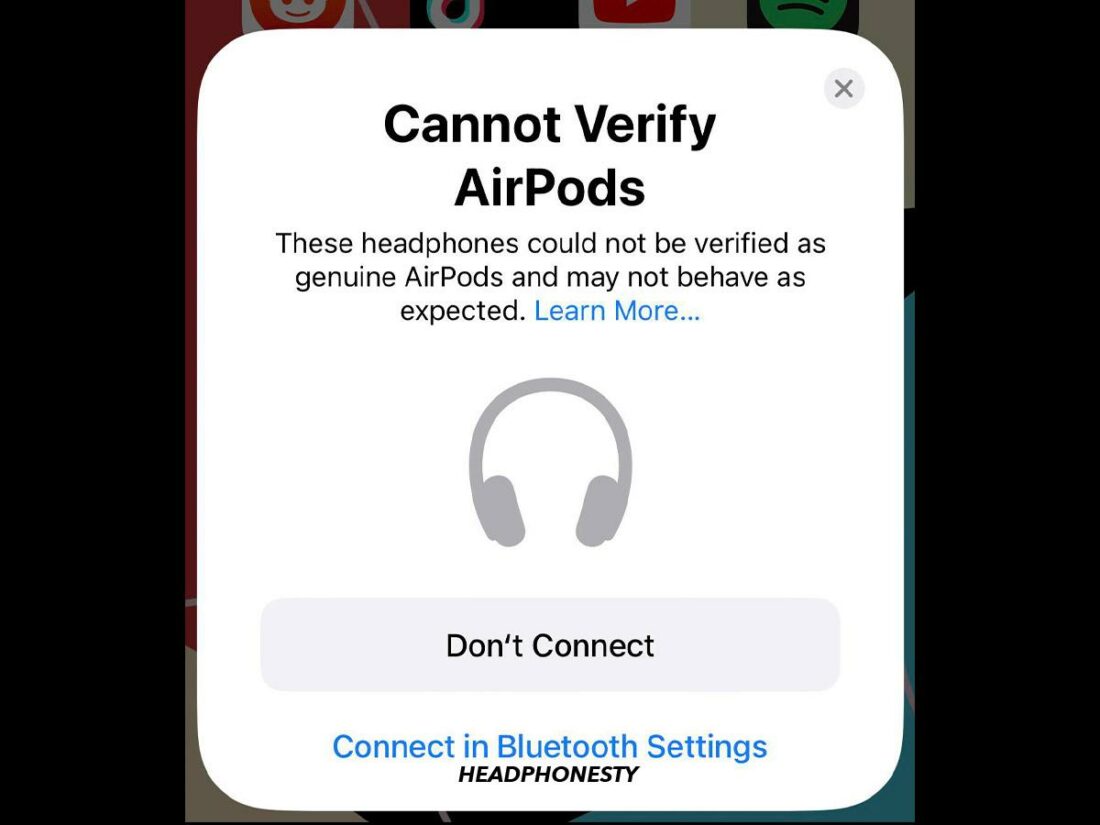
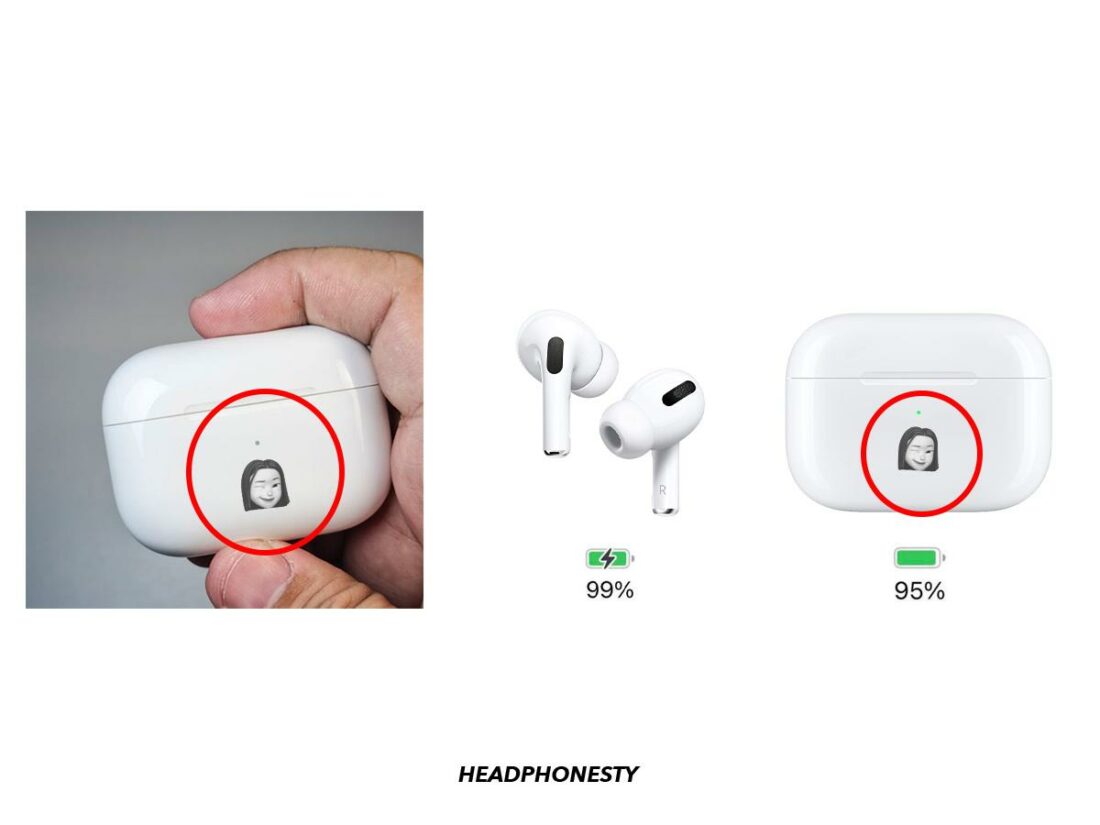
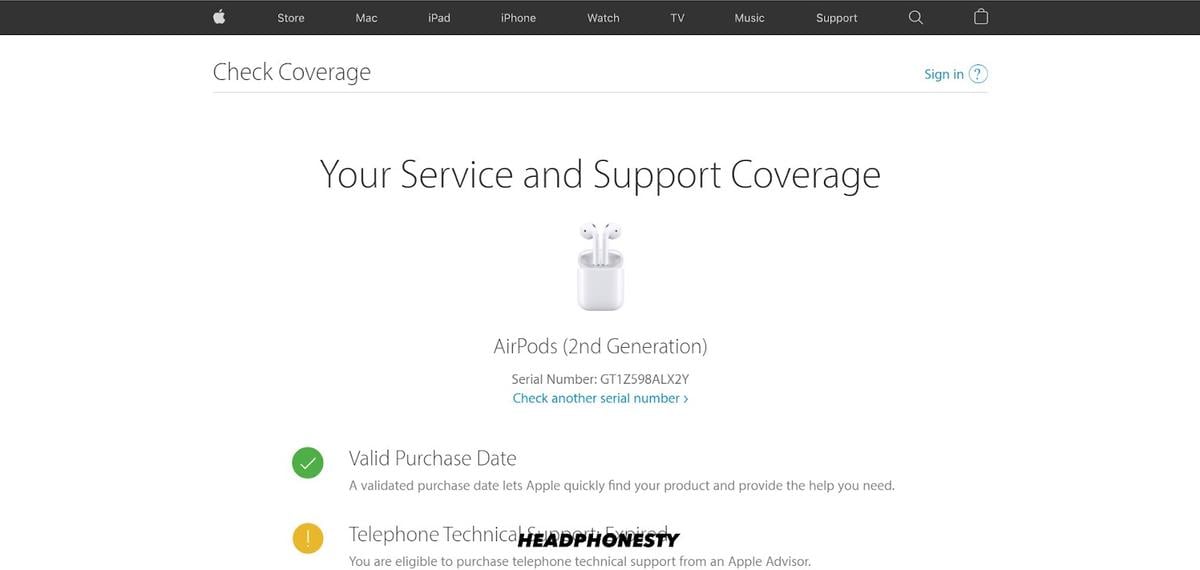
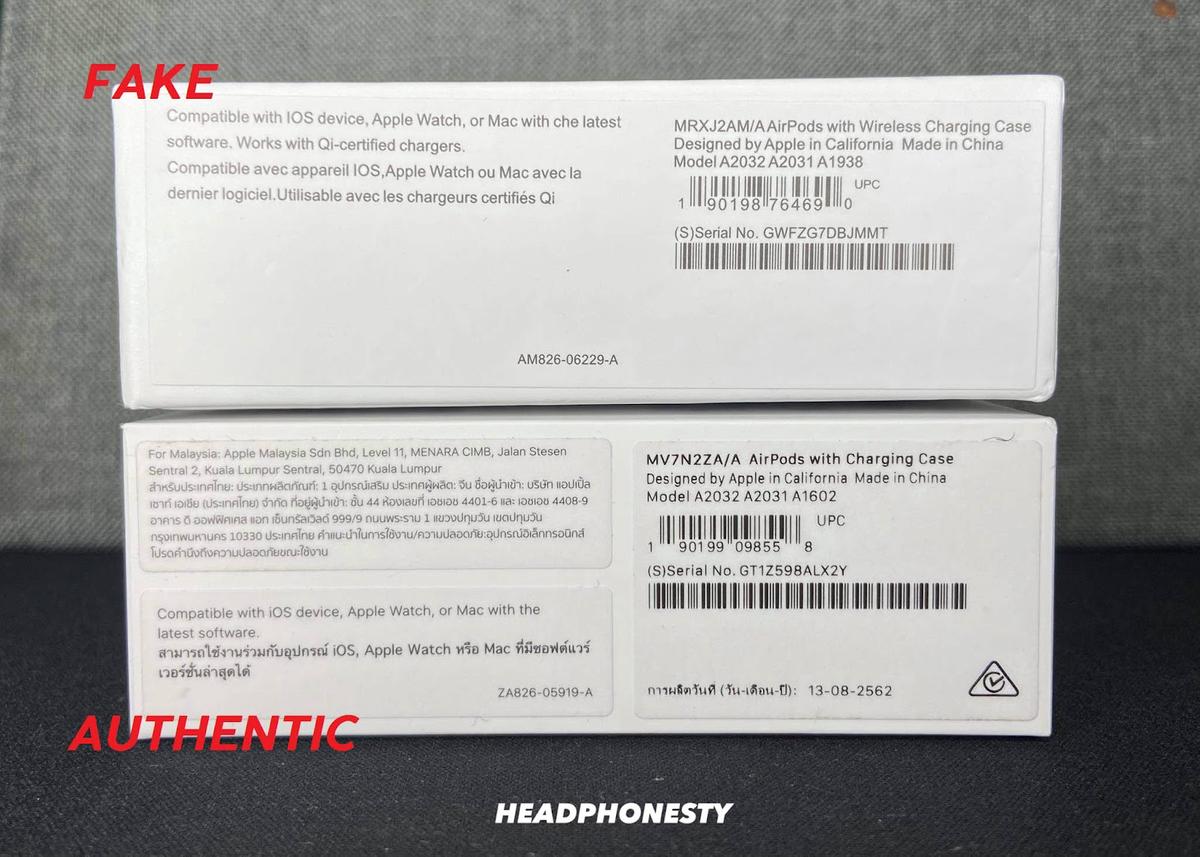
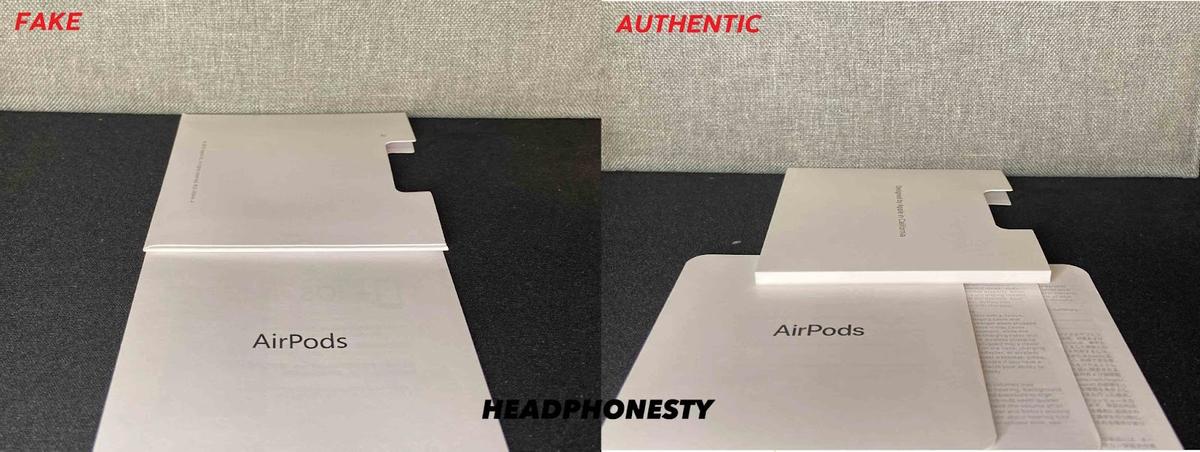
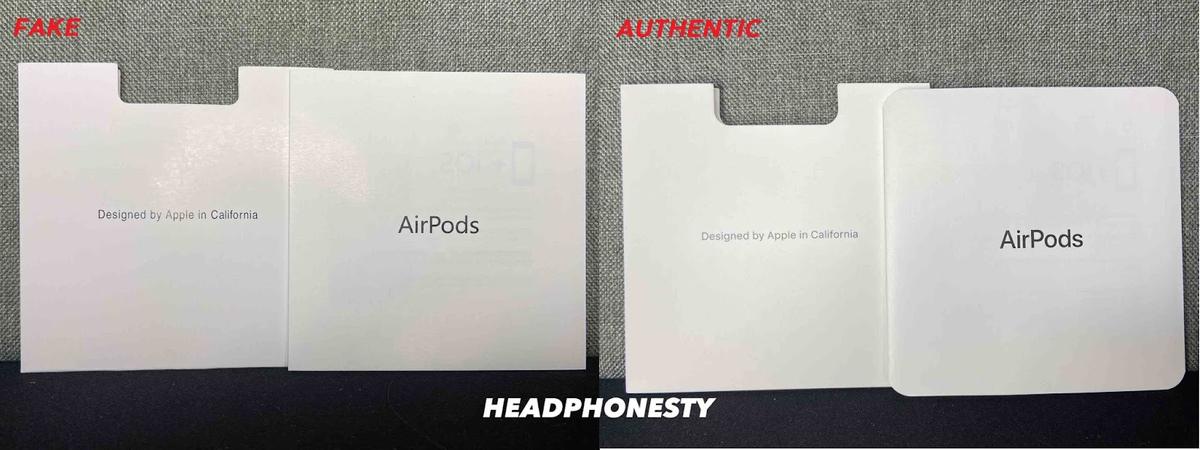
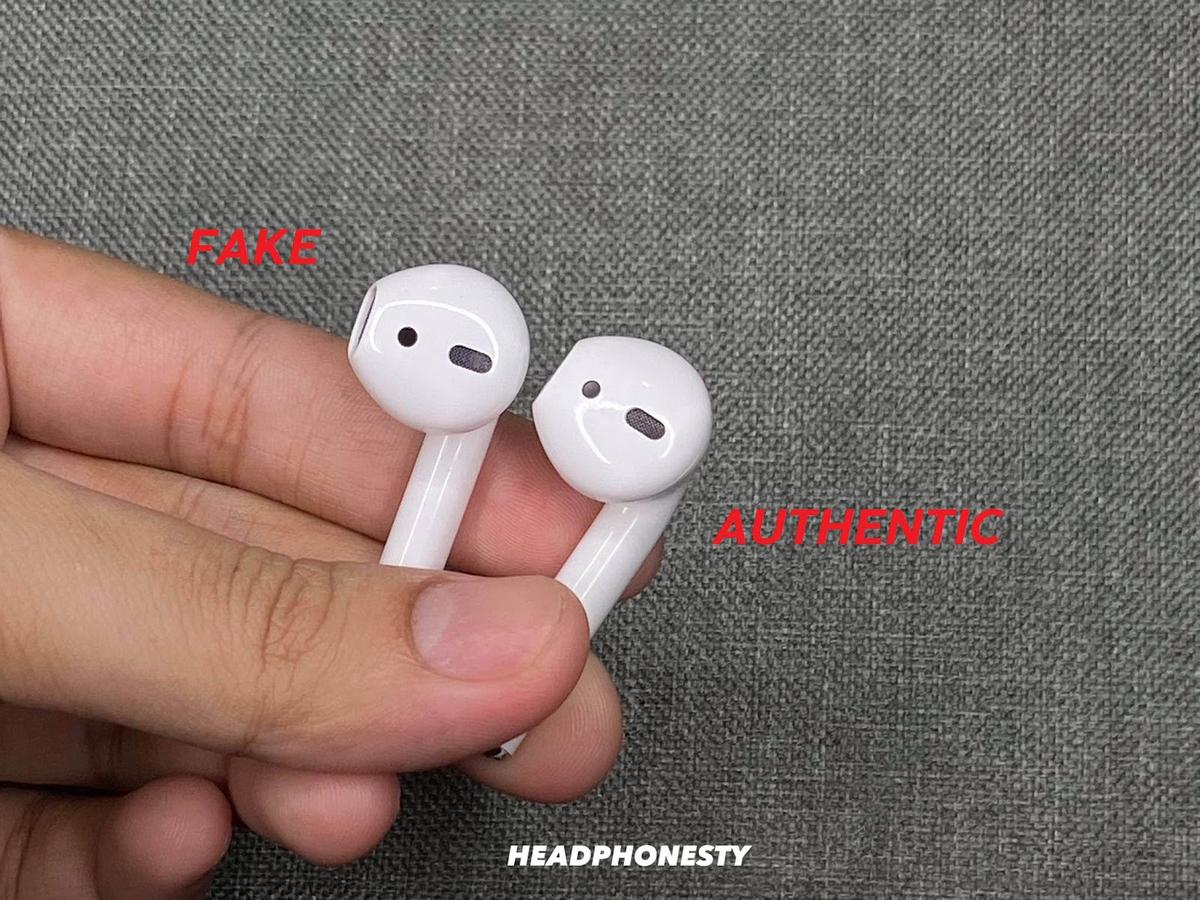
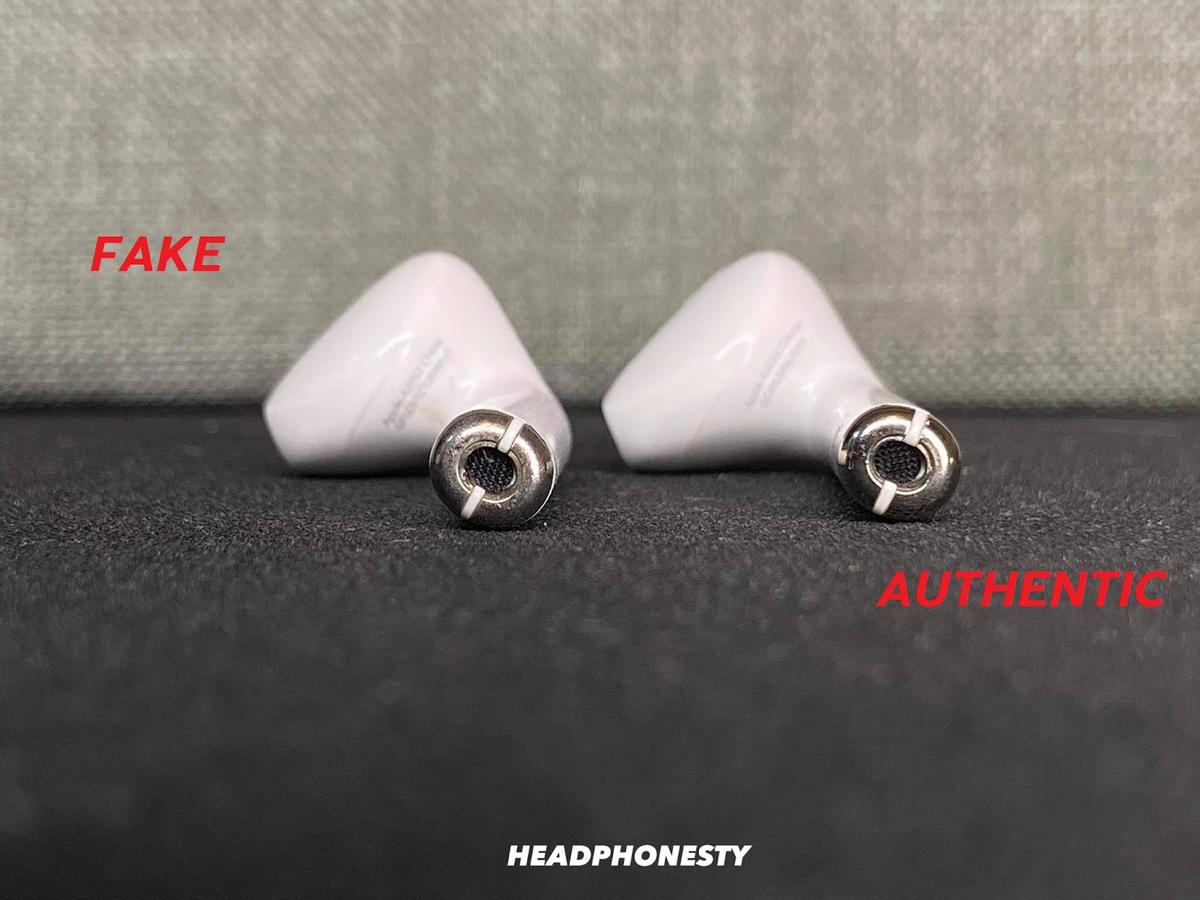
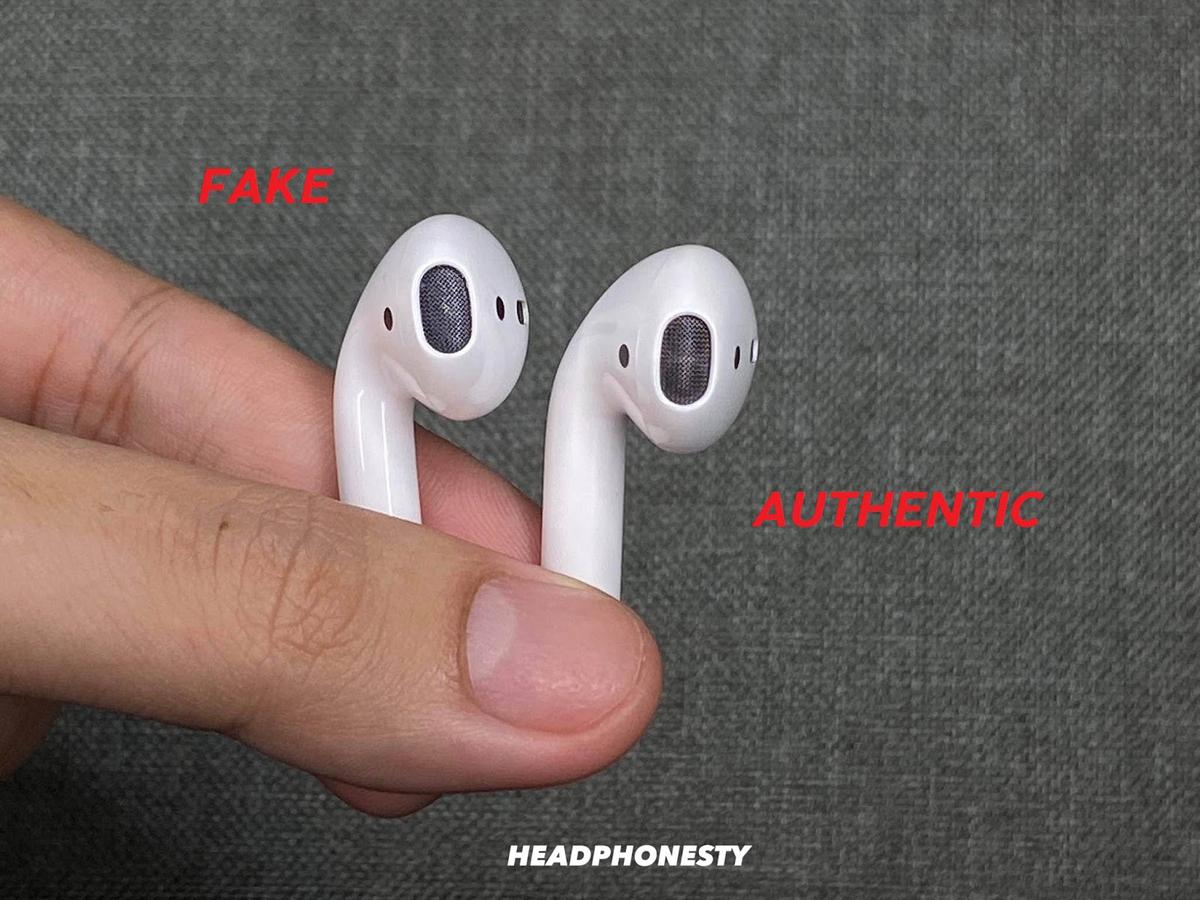
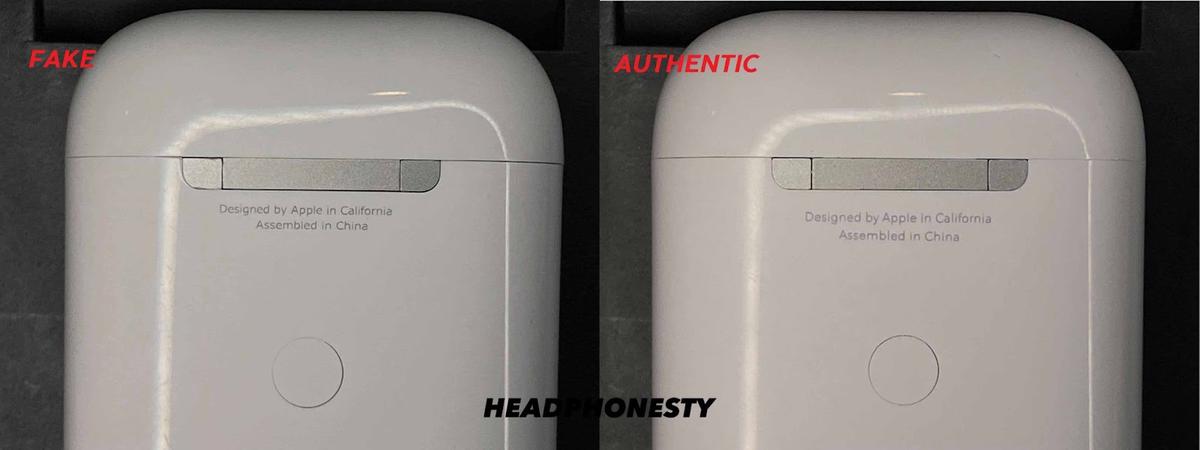
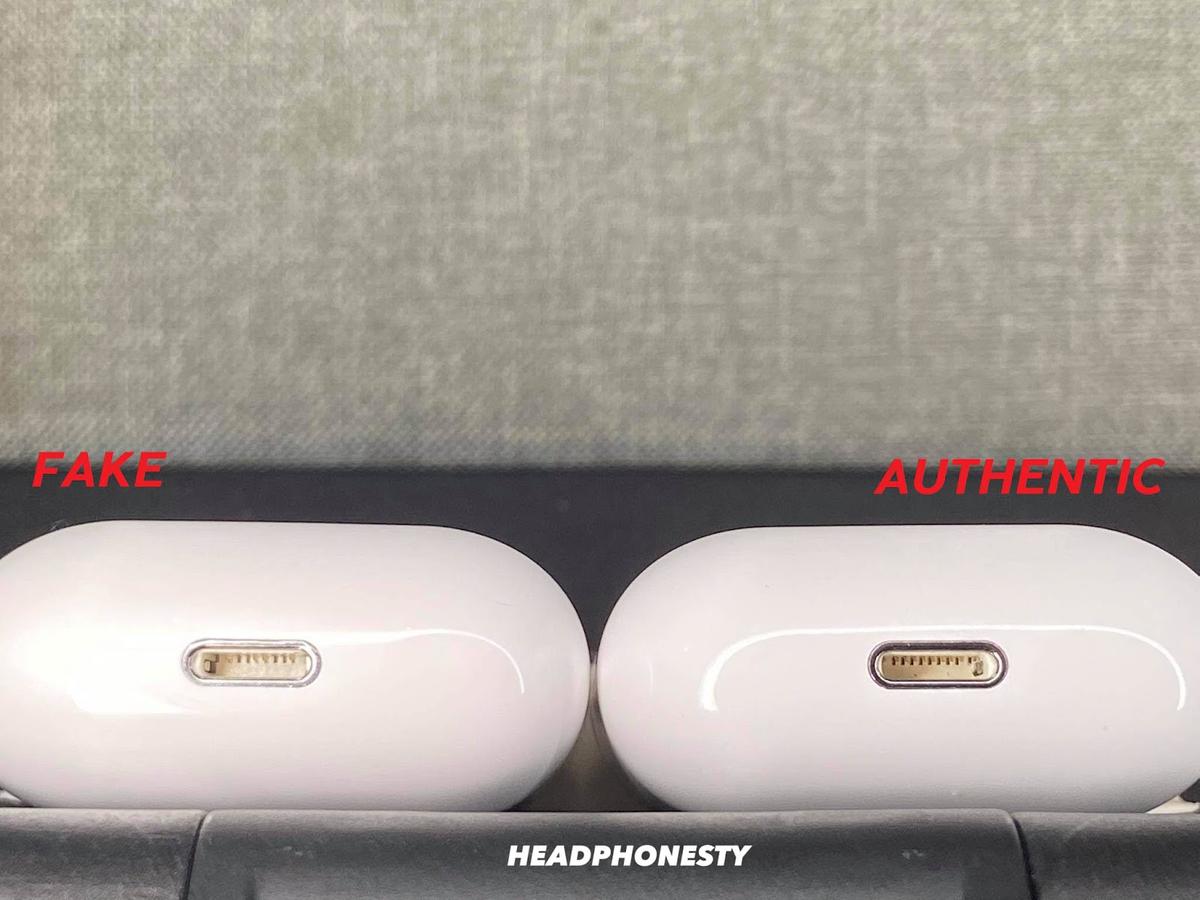
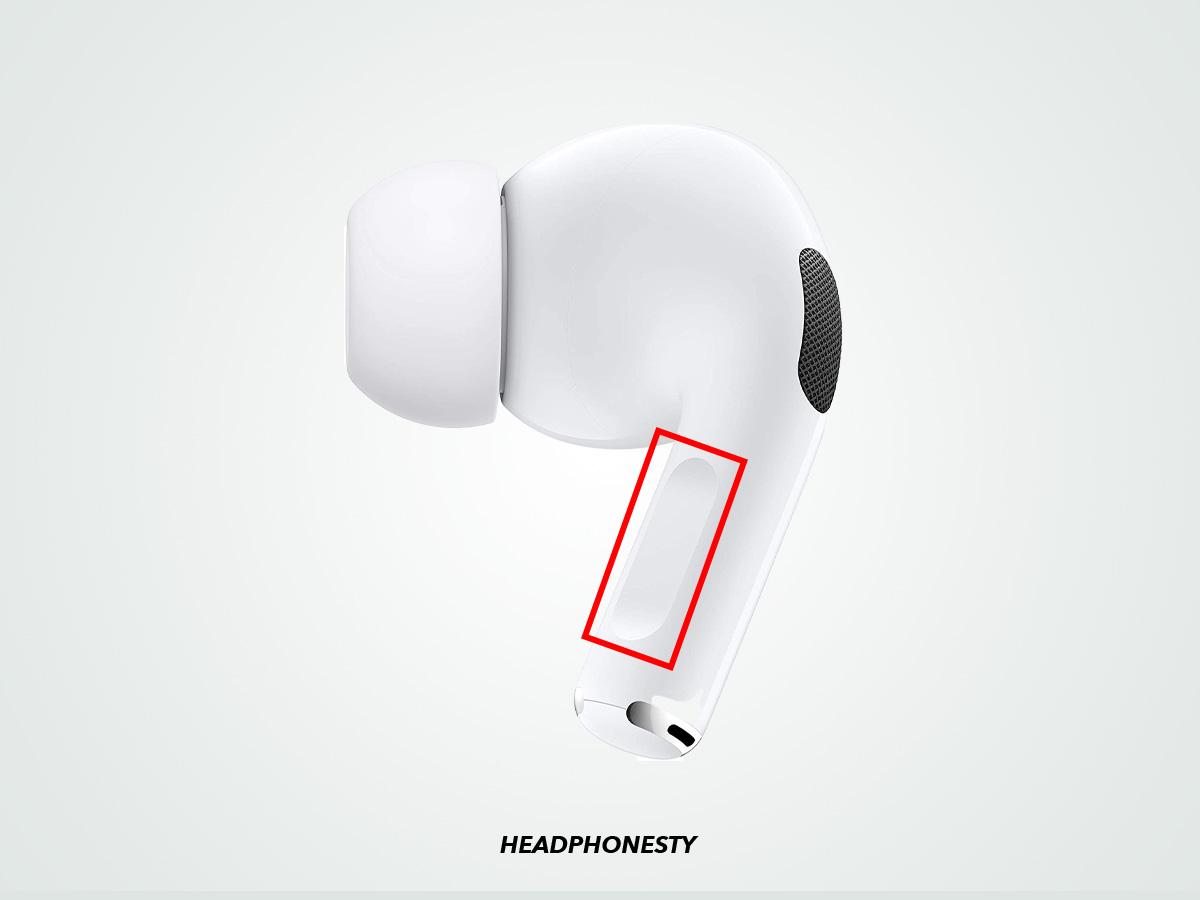
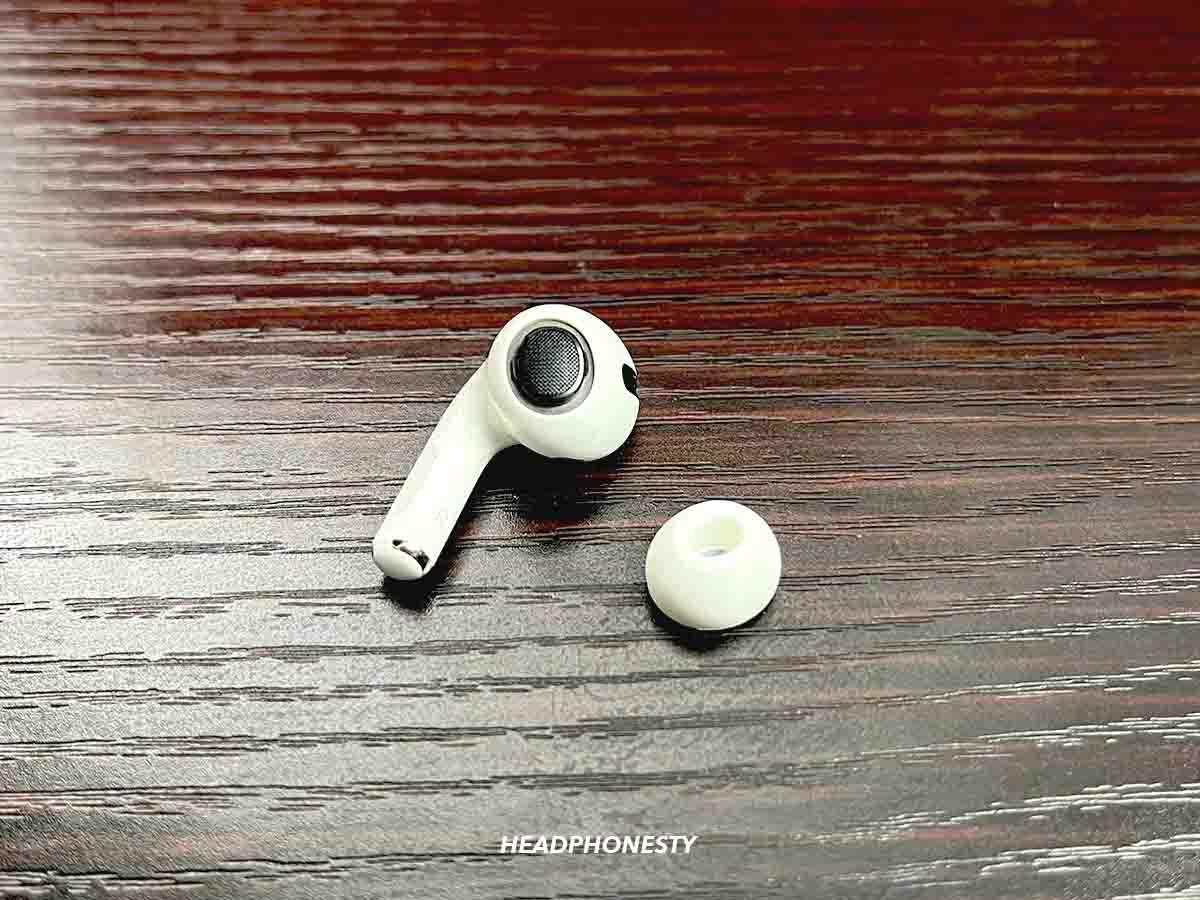
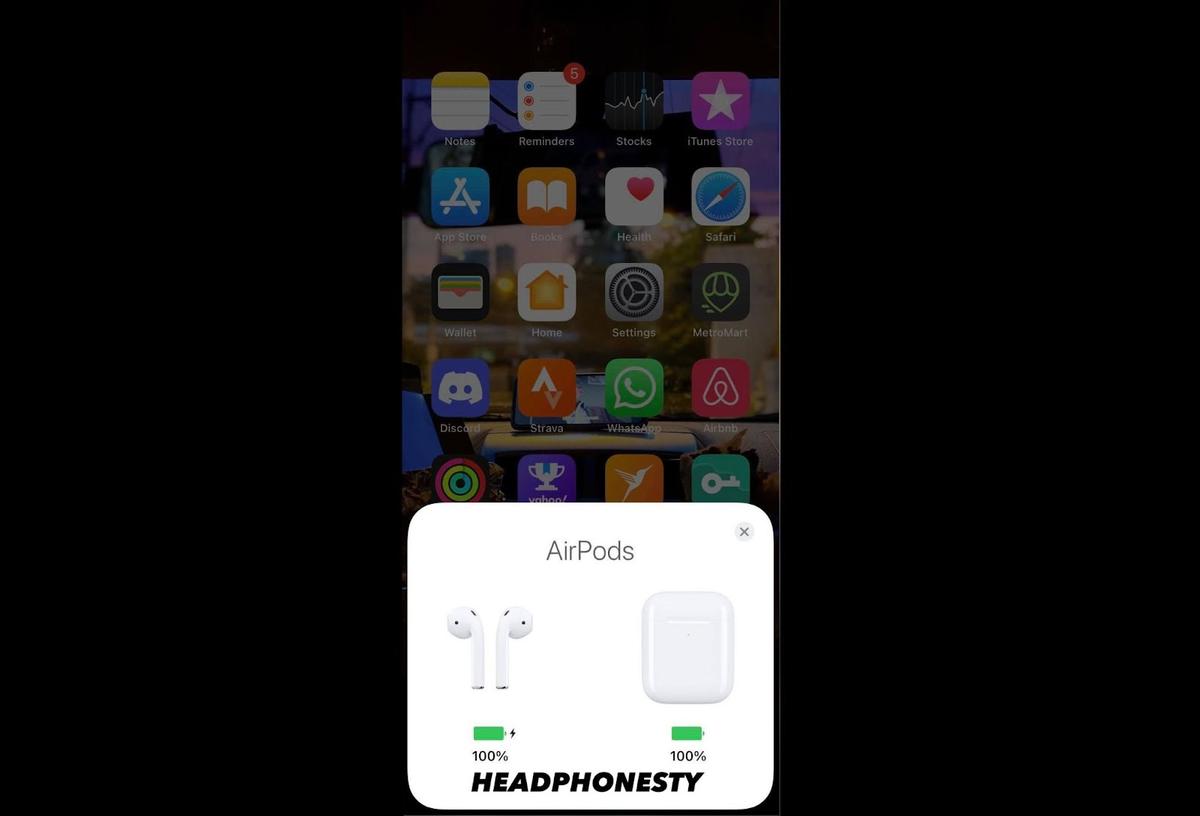
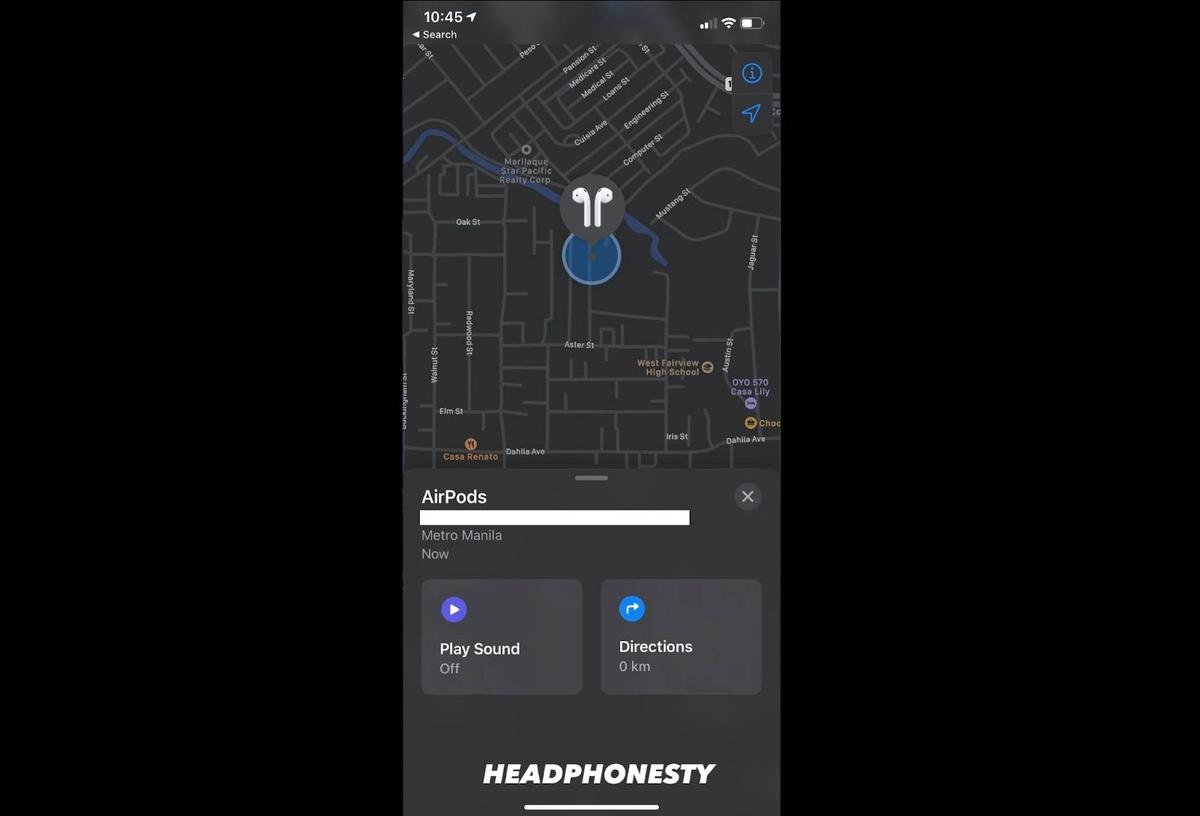
![]()
![]()
![]()